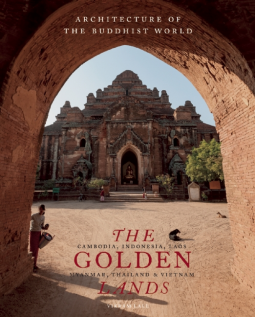
The Golden Lands
Cambodia, Indonesia, Laos, Myanmar, Thailand & Vietnam
by Vikram Lall
This title was previously available on NetGalley and is now archived.
Buy on Amazon
Buy on BN.com
Buy on Bookshop.org
*This page contains affiliate links, so we may earn a small commission when you make a purchase through links on our site at no additional cost to you.
Send NetGalley books directly to your Kindle or Kindle app
1
To read on a Kindle or Kindle app, please add kindle@netgalley.com as an approved email address to receive files in your Amazon account. Click here for step-by-step instructions.
2
Also find your Kindle email address within your Amazon account, and enter it here.
Pub Date Sep 02 2014 | Archive Date Aug 16 2016
Description
A groundbreaking survey of the Buddhist architecture of Southeast Asia, abundantly illustrated with new color photography and 3-D renderings
Over the course of its 2,500-year history, Buddhism has found expression in countless architectural forms, from the great monastic complexes of ancient India to the fortified dzongs of Bhutan, the rock-carved temple grottoes of China, the wooden shrines of Japan, and the colorful wats of Cambodia, Laos, and Thailand. Architecture of the Buddhist World, a projected six-volume series by the noted architect and scholar Vikram Lall, represents a new multidisciplinary approach to this fascinating subject, showing how Buddhist thought and ritual have interacted with local traditions across the Asian continent to produce masterpieces of religious architecture.
The first volume in the series, The Golden Lands, is devoted to Southeast Asia, home to many of the most spectacular Buddhist monuments. Following a general introduction to the early history of Buddhism and its most characteristic architectural forms (the stupa, the temple, and the monastery), Lall examines the Buddhist architecture of Myanmar, Vietnam, Indonesia, Cambodia, Thailand, and Laos in turn. For each country, he provides both a historical overview and case studies of noteworthy structures. Lall’s concise and accessible text is illustrated throughout with new color photography, as well as 3-D architectural renderings that make even the most complex structures easily comprehensible.
The monuments that Lall considers in The Golden Lands range from the modest Bupaya stupa, constructed in Bagan, Myanmar, in the third century AD, to the vast complex of Borobudur in Central Java, the world’s largest Buddhist monument; his achievement is to place them all within a single panorama of history, religion, and artistic innovation.
Distributed for JF Publishing
Over the course of its 2,500-year history, Buddhism has found expression in countless architectural forms, from the great monastic complexes of ancient India to the fortified dzongs of Bhutan, the rock-carved temple grottoes of China, the wooden shrines of Japan, and the colorful wats of Cambodia, Laos, and Thailand. Architecture of the Buddhist World, a projected six-volume series by the noted architect and scholar Vikram Lall, represents a new multidisciplinary approach to this fascinating subject, showing how Buddhist thought and ritual have interacted with local traditions across the Asian continent to produce masterpieces of religious architecture.
The first volume in the series, The Golden Lands, is devoted to Southeast Asia, home to many of the most spectacular Buddhist monuments. Following a general introduction to the early history of Buddhism and its most characteristic architectural forms (the stupa, the temple, and the monastery), Lall examines the Buddhist architecture of Myanmar, Vietnam, Indonesia, Cambodia, Thailand, and Laos in turn. For each country, he provides both a historical overview and case studies of noteworthy structures. Lall’s concise and accessible text is illustrated throughout with new color photography, as well as 3-D architectural renderings that make even the most complex structures easily comprehensible.
The monuments that Lall considers in The Golden Lands range from the modest Bupaya stupa, constructed in Bagan, Myanmar, in the third century AD, to the vast complex of Borobudur in Central Java, the world’s largest Buddhist monument; his achievement is to place them all within a single panorama of history, religion, and artistic innovation.
Distributed for JF Publishing
Available Editions
| EDITION | Hardcover |
| ISBN | 9780789211941 |
| PRICE | $95.00 (USD) |



